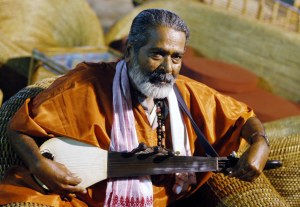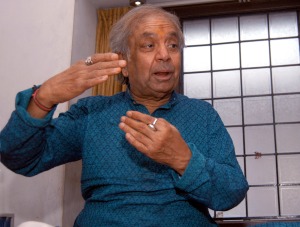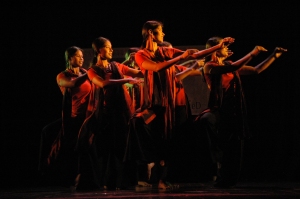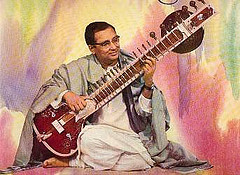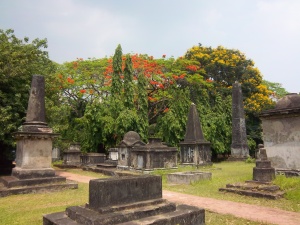
A view of South Park Street Cemetery
Two men sit deep in discussion in a small, sparsely furnished office inside the South Park Street Cemetery (SPS), cups of tepid tea in front of them. Outside, the antique, silent tombstones stand cool under the shade of giant trees in the blazing noonday sun. The bustle of Park Street is a muted hum, nothing that the chirping of birds and squirrels cannot easily drown.
The men are Ranajoy Bose, executive member of the Christian Burial Board (CBB), and Dr Sudip Bhattacharya, a reader in the department of English, at Ramakrishna Mission Vidyamandira, Belur. And both are engaged in a task that has the potential to make the difference between survival and extinction for a large chunk of the city’s heritage – its colonial cemeteries.
Bose, a former member of Kolkata’s corporate circles, and Bhattacharya, who almost accidentally finds himself writing a book on Kolkata’s colonial cities of the dead, are united in one other respect: a fierce pride in their city’s past, and an urgent realisation that unless steps are taken now, cemeteries such as the ones on South Park Street and Lower Circular Road may well go the way that a few others of their kind have done – become irretrievably extinct.
“Outwardly, some of the cemeteries are in relatively decent condition, such as South Park Street, but without constant fund, maintenance and renovation, the existing tombstones will join those already ruined,” says the 41-year-old Bhattacharya. Bose adds, “South Park Street is one of the world’s oldest walk-through cemeteries, but not too many people in this city know that.”
As they take us on a guided tour of the eight acres of lush green land, Bose and Bhattacharya point out graves of historical significance. Mary Bowers, who died in 1781 after having survived the infamous Black Hole of Calcutta, young Rose Aylmer, a renowned beauty and the heroine of Walter Savage Landor’s poem of the same name, Sir William Jones, the celebrated Indophile, Sanskrit scholar, and founder of the Asiatic Society, and, of course, HLV Derozio, founder of Young Bengal and rebel extraordinaire.
A few blocks away, at the still operational Lower Circular Road cemetery, Bhattacharya points out an interesting fact. “You’ll find the graves of many American sailors here,” he says. “They came out on the ships that brought ice to Kolkata, which was stored in the old mint near Howrah Bridge. Clearly, the Europeans here had a weakness for natural American ice.” Interestingly, LC Road also houses the tomb of Rev Sudhir Chatterjee, a member of the IFA Shield winning 1911 Mohun Bagan team.
This is just one of his findings, one of the many that he has come across as he read up about the cemeteries and the people buried in them. “You know, I found out that when he first came out to India as a judge, Sir William Jones’ only priority was to save 30,000 pounds from his salary, which he calculated would take him six years, and then go back to England,” he smiles. “Without exception, Europeans came to this city to get rich. India was the pagoda tree for them.”
Bose adds, “When you look at the graves, you realise the enormity of Kolkata’s cultural diversity in the 18th and 19th centuries, and its tremendously cosmopolitan nature. As a Bengali, that is a source of great pride for me.”
Also significant among Bhattacharya’s findings is the fact that many of the deceased in these cemeteries died young, and of diseases as yet unknown to European medical science (the earliest death in SPS dates back to 1768). “On the one hand, they were forging an empire, and on the other, their doctors were trying to combat diseases for which they often didn’t even have names,” he says. So, with the cemeteries as his starting point, part of his agenda is to figure out the European plan of action in the face of the assault.
Neither is it possible to ignore the archaeological significance of SPS in particular. “This cemetery is probably unique in that it is a Christian cemetery with almost no crosses on the tombstones,” says Bhattacharya. “Instead, you have an explosion of Indo-Saracenic architectural styles that clearly indicate the influence of local builders and architects on the tombstones.”
A most remarkable example is the tomb of Maj Gen Charles ‘Hindoo’ Stewart, who converted to Hinduism and ritually bathed in the Ganges, though he was given a Christian burial. Modelled on Orissa temple architecture, his renovated tomb proudly attests to his flamboyant life and times.
Also clear is the economic significance of every burial. “Quite clearly, the more lavish tombstones contributed handsomely to the local economy,” says Bhattacharya. “An average tombstone would cost in the range of 900 sikka rupee (around 400 pounds). The more lavish ones could cost anything between 3,000 and 5,000 sikka rupees.”
At none of the other cemeteries, though, is one to find the level of renovation evident at SPS. As Bhattacharya and Bose both point out, the relatively happy situation at SPS is the result of the combined efforts of the British Association for Cemeteries in South Asia (BACSA), the CBB, and the Association for the Preservation of Historical Cemeteries in India (APHCI). Add to that the efforts of retired archaeologist A Bandopadhyay and botanist Dr KN Ghosh, and SPS has a relatively decent outlook.
“At both Lower Circular Road and SPS, we are planning a botanical map of the rare plants on the premises,” says Bose. “And both are also potential ‘carbon sinks’, or green zones that provide much needed pollution control.”
Clearly, though, it will take several years for the same efforts to reach the Maniktala cemetery, for instance, which houses the graves of the remarkable poetess and novelist Toru Dutt and her family. Though partially renovated recently, the graves are lying in the midst of appalling neglect and ruin, as are those at the Scottish Cemetery on Karaya Road. The Greek cemetery at Phoolbagan is in a happier condition, but strictly keeps visitors away.
Happily for the Scottish Cemetery, the Kolkata Scottish Heritage Trust has taken up its cause and is seeking to at least restore parts of the cemetery, to it former glory, as was done with SPS. ‘These cemeteries are clearly among our most important colonial relics,” says Bandopadhyay. “Every single grave is worthy of preservation.”
While those preservation efforts may have come too late for some cemeteries and tombs, Bose feels the only way forward is to make the cemeteries more tourist friendly, so that revenue generation is a possibility. “These tombs are a testament to the social, economic, and political conditions that have shaped our present. We ignore them at our peril,” he says.
This article first appeared in the Hindustan Times on November 27, 2011

